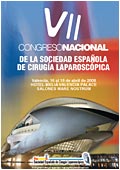DISCUSSION
Robot assisted radical prostatectomy has generated significant interest among urologists. In the year 2004, ten percent of all radical prostatectomies in the United States were performed by the daVinci robot. This increased to 20% in 2005. In the year 2006, the expectations are even greater.
Complex laparoscopic procedures are simplified by robot assistance. This results in a faster learning curve and possibly in more favourable oncological and functional results when comparing to conventional laparoscopic and open procedures.
In different studies, the percentage of positive surgical margins in organ confined tumours (pT2) after open radical prostatectomy and after conventional laparoscopic radical prostatectomy ranges between 7.8 and 27% [9-10] and 8 and 29% respectively [11-12]. Ahlering et al [13] published the oncological results of their first 140 RoLRP. In this study, the percentage of positive surgical margins in organ-confined tumours was merely 4.7%. Only 2.5% of the organ-confined tumours (pT2) in our study had positive surgical margins.
Major preoperative complications were absent in our series. If problems are encountered, conversion into open or laparoscopic prostatectomy should be considered. In our series, only one conversion to open surgery was mandatory due to mechanical failure. Conversion to open surgery or laparoscopy should be dependent on the surgeon’s experience.
We encountered temporary paralysis of the limbs due to neuropraxia in three of our patients (2 cases concerning the plexus brachialis and one case concerning the sciatic nerve). Extra safety measures are now used to protect the precarious pressure points of the patient placed in extreme trendelenburg position.
In different studies, comparing the functional results after open, conventional laparoscopic and robot radical prostatectomy, the percentage of complete continence is almost identical. This percentage varies between 80-95% after a follow-up of 12 months [14]. In our study, 95% of the patients were continent.
In a prospective non-randomized study of Tewari and Menon [15], the postoperative results of open and robot radical prostatectomies were compared. In this study, the robot group achieved continence more rapidly when compared to the open group (50% complete continence after 44 days in the robot group vs 160 days in the open group). Forty-three percent of the continent patients in our study group achieved complete continence within 28 days.
Takenaka A. et al [16] and Ficarra V. et al [17 ] also illustrated a rapid return of continence in RoLRP.
Anastasiadis and Rassweiler [18 &19] compared the functional results after open and conventional laparoscopic radical prostatectomy. They showed no significant difference in the time to complete continence in both groups. In the study of Anastasiadis [17], the time to nocturnal continence in the laparoscopic group was shorter.
The trend of a more rapid recuperation of continence after RoLRP is also projected in the potency results of Tewari and Menon. Patients after RoLRP had a more rapid return of erection (50% return of potency after 180 days in the robot group vs. 440 days in the open group) [15]. The definitive return of potency after a bilateral nerve-sparing procedure (laparoscopic or open) varies between 32 and 86% in different studies [14]. The data on the postoperative sexual function, after RoLRP, is still immature. In a few series [15, 20] that have reported on potency, +/- 80% of the patients had return of erections (with or without the use of PDE-5 inhibitors) at a mean weighted follow-up of 7.7 months.
Eighty-one percent of our patients, who were younger then 60 years old, were potent (with or without the use of PDE-5 inhibitors) and able to perform sexual intercourse. This percentage dropped to 51% in patients older then 60 years old.
Finally, especially in Europe, there is the problem of costs and reimbursement. Purchase of a new device is 1.300. 000 to 1. 850. 000 Euro TVA inclusive, costs for maintenance about 10 % of that sum and the instruments between 1 000 and 1 500 Euro pro case. When we consider to perform 250 cases per year, the estimated cost pro case is about 2 500 Euro. In Belgium, as in most European countries, no reimbursement for robot-assisted surgery exists to date. This is in contrast with brachytherapy, where the seeds are reimbursed for 6 000 Euro. Whereas, laparoscopic radical prostatectomy may reach the cost-equivalence of open surgery, this is probably not the case for robot assisted radical prostatectomy [21].
As stated in the methods section, we performed all RoLRP via a transperitoneal approach. Different centers have recently performed the RoLRP via an extraperitoneal approach. Joseph JV and Patel HR et al [22] concluded that this new approach was feasible with good visualisation and dexterity of the robot while avoiding the peritoneal cavity. Atug F. and Davis R.[23] concluded in a randomised prospective study, comparing the extraperitoneal and transperitoneal approach in 80 patients, that both approaches produced comparable and favorable outcomes. There were no statistically significant differences founds in the results of both groups. Surgeon preference will likely play a significant role in the approach used.
We can conclude that the functional and oncological results of this minimal invasive procedure seem very promising. Longer follow-up of the data, the use of objective questionnaires to assess functional outcome and larger prospective studies are necessary to confirm these promising results.





